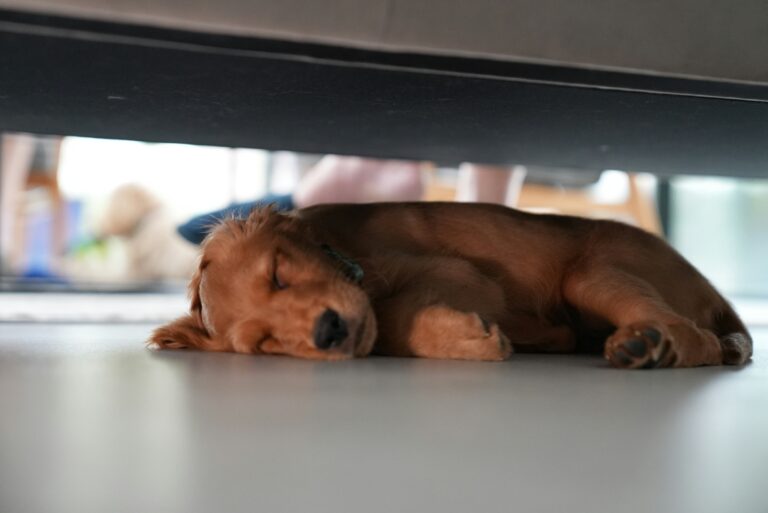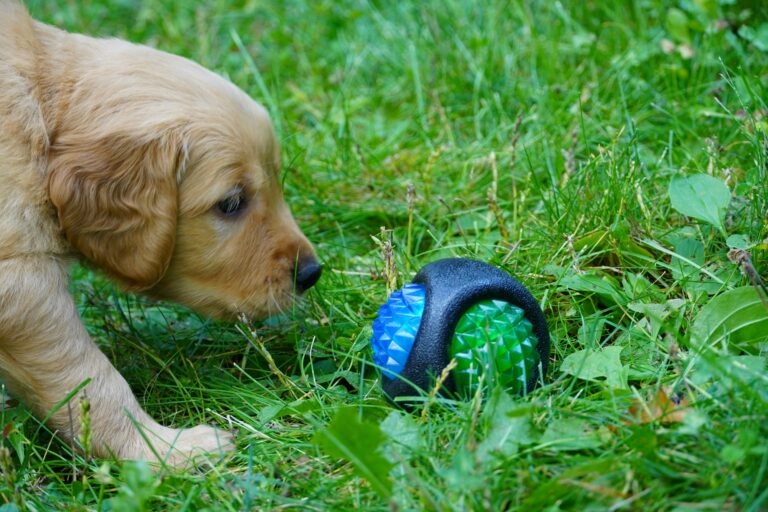If you are a proud pet parent to a small breed dog, understanding how to effectively establish boundaries in your home is a crucial part of your pet parenting journey. The principle of setting boundaries for small breed dogs might sound simple, but the practical implementation can be a complex task. This detailed guide titled “Small but Mighty: Mastering Boundaries for Small Breed Dogs in Your Home” aims to help pet parents navigate this intricate process with ease. 🐕
This comprehensive guide will delve into the nuances of setting boundaries for small breed dogs. We’ll explore why it’s essential for their safety, mental well-being, and how it helps in maintaining a harmonious household. We’ll also shed light on how the size and personality traits of small breed dogs can affect the process of boundary setting. 🏡
Furthermore, we’ll provide practical advice on techniques to establish effective boundaries, including tips on training, the use of positive reinforcement, and the role of pet-friendly spaces. We’ll also discuss common mistakes to avoid and ways to handle boundary-testing behavior, providing you with a holistic understanding of the subject. 🐾

By the end of this guide, you’ll have a solid foundation in mastering boundaries for your small breed dog in your home. Whether you’re a seasoned pet parent or welcoming a small breed dog into your family for the first time, this guide will equip you with the knowledge and skills needed to create a safe, comfortable, and structured environment for your petite pooch. 🏠 🐶 So, get ready to embark on this exciting journey to master boundaries for your small breed dog!
Preparing Your Home Environment for Success
Before enforcing boundaries, it’s essential to set up your home in a way that supports your small dog’s learning and comfort. A structured, well-organized environment helps dogs feel secure and reduces the chances of rule-breaking.
Start by identifying which areas your dog is allowed in and which are off-limits. Use physical cues such as rugs, pet gates, or furniture placement to clearly define spaces. Make their permitted areas appealing with cozy beds, toys, and water bowls. This positive reinforcement of allowed zones encourages your dog to stay within those limits.
Establish consistent routines for feeding, play, training, and rest. Predictability helps small dogs thrive and reduces anxiety, which can lead to fewer boundary-related issues. When dogs know what to expect, they are less likely to act out or seek attention through misbehavior.
The Role of Positive Reinforcement in Boundary Training
Positive reinforcement remains one of the most effective techniques for shaping your dog’s behavior, especially for small breeds. Rather than focusing on punishment, reward-based methods encourage your dog to choose correct behavior willingly.
When your dog stays within a set boundary, immediately praise them or offer a treat. You can also use clicker training to reinforce correct positioning near doorways or thresholds. Over time, your dog will associate staying in the appropriate areas with good things happening.
Avoid yelling or using harsh tones if your dog crosses a boundary. Instead, calmly guide them back and offer a reward when they comply. Consistency and patience will eventually lead to long-lasting results and a stronger bond between you and your pet.
Teaching Boundary Cues and Commands
Training your dog to respond to specific boundary-related commands enhances their understanding and control. Commands like “stay,” “back,” or “wait” are especially useful near doors or restricted rooms.
Start by using treats and a firm voice to teach your dog to stop at thresholds. You can mark the line with painter’s tape or a mat to give them a visual cue. Practice this repeatedly until your dog learns to pause at the boundary automatically.
Another helpful technique is redirection. If your dog approaches an off-limits area, use a toy or treat to redirect them to an allowed space. Reward them generously for choosing the correct action.
Managing Boundary-Testing Behavior
Many small breed dogs are clever and persistent, which can lead them to test boundaries repeatedly. Recognizing the signs of testing is the first step in correcting the behavior.
Dogs that repeatedly try to enter restricted areas may be doing so out of boredom, curiosity, or a desire to be near you. In such cases, evaluate whether their physical and emotional needs are being met. Increasing mental stimulation and exercise can significantly reduce boundary testing.
Be firm yet fair in your enforcement. If you give in to whining, barking, or pawing at gates, your dog learns that those behaviors lead to access. Consistency is key; if a rule is enforced one day and ignored the next, your dog may become confused and push boundaries more frequently.
Utilizing Training Tools and Accessories
There are a variety of tools and accessories that can support your boundary training efforts. Leashes and long lines can be used indoors to guide your dog’s movements gently. These are particularly useful in the early stages of training when close supervision is needed.
Treat-dispensing toys can also play a role by keeping your dog engaged in permitted areas. If your dog is busy working on a puzzle toy in the living room, they are less likely to wander into a restricted space.
Another helpful item is a pet-safe spray deterrent. These can be applied to furniture legs or floor edges to discourage chewing or stepping into forbidden zones. Always choose products that are non-toxic and vet-approved.
Incorporating Boundaries into Daily Activities
Integrating boundary training into daily routines makes it more effective and sustainable. Mealtime, playtime, and rest periods are all opportunities to reinforce spatial rules.
For example, require your dog to sit at the threshold of the kitchen while you prepare meals, using a “stay” command. During family gatherings, guide your dog to remain in a designated space, using positive reinforcement and a reward system.
You can even practice boundary training during leash walks indoors. Practice walking to the edge of a room and stopping, reinforcing your dog’s ability to halt at imaginary boundaries. These mini exercises boost impulse control and reinforce your leadership role.
Creating a Safe and Enriched Living Space
Small breed dogs thrive in spaces that are both secure and enriched. In addition to physical boundaries, mental stimulation and safe zones play a crucial role in their overall well-being.
Provide a designated “calm zone” in your home where your dog can retreat when they need rest or downtime. This might include a soft bed, their favorite blanket, and a couple of chew toys. By offering them a sanctuary, they’re less likely to seek out forbidden areas.
Rotate toys weekly to keep your dog mentally stimulated. Puzzle feeders, interactive games, and scent-based activities can reduce boundary-pushing caused by boredom. A well-stimulated dog is typically more content and better behaved.
Recognizing Boundary Success and Progress
Celebrate the progress your small dog makes in respecting boundaries. Recognizing small wins—like staying outside the bathroom door or resisting the temptation to jump onto the sofa—reinforces positive habits.
Keep a log or mental note of improvements. This allows you to adjust your approach if needed and helps you appreciate how far your dog has come.
If your dog regresses or has setbacks, don’t panic. These moments are natural and can often be corrected by revisiting basic training and increasing consistency. Avoid harsh corrections, as these can undermine trust and increase anxiety, especially in sensitive small breeds.ting the system.
Understanding Your Dog’s Needs
Setting boundaries in your home is not just about controlling your dog’s behavior, but also about understanding their needs.
For example, small breed dogs often need more exercise and mental stimulation than larger breeds. This is due to their high energy levels and intelligent minds. By incorporating play and exercise into your daily routine, you can help satisfy these needs and reduce the likelihood of boundary issues.
Diet and Nutrition
Diet and nutrition play a crucial role in your dog’s behavior and overall well-being. A balanced diet can contribute to their energy levels, mood, and overall health.
When feeding your small breed dog, consider their unique dietary needs. Small breed dogs typically require a diet high in protein to support their high energy levels and fast metabolisms.

Professional Assistance
In some cases, you may need professional assistance to manage boundaries effectively. Dog trainers and behaviorists have the skills and knowledge to help you understand your dog’s behavior and provide practical solutions.
Remember, each dog is unique, and what works for one might not work for another. By taking the time to understand your small breed dog, you can create a positive and respectful living environment for you both.
Online Resources
There are plenty of online resources available for pet owners struggling with boundary issues. Websites, blogs, and forums dedicated to small breed dogs can provide a wealth of information and advice. Online training courses can also be beneficial, offering step-by-step guidance to help you and your dog navigate the world of boundaries together.
Conclusion
Building a deeper understanding of your small dog’s perspective is at the heart of successful boundary training. These intelligent and spirited companions often act out not out of disobedience, but due to anxiety, boredom, or miscommunication. Rather than viewing unwanted behaviors as willful disobedience, consider them as clues to what your dog might need more or less of—be it attention, stimulation, exercise, or reassurance.
Integrating structure into your dog’s daily life is one of the most effective ways to support healthy behavior. This can include having set meal times, consistent walking schedules, regular play sessions, and a predictable bedtime routine. Dogs thrive on routine, and a clear structure helps them understand expectations and boundaries more clearly. For small breeds, who can sometimes be overlooked or overindulged, a routine becomes a gentle guidepost for behavior.
One of the most overlooked aspects of setting boundaries is managing human behavior within the home. If every family member has a different approach to the dog—some allowing them on furniture, others not; some encouraging lap time during meals, others discouraging it—it creates confusion and undermines your training efforts. A successful boundary plan requires consistency from all household members. Establishing house rules and ensuring everyone is on board strengthens your dog’s ability to follow boundaries and builds their confidence in navigating the home.
In addition to setting rules, it’s essential to provide your dog with plenty of positive outlets for their natural instincts. Chewing, digging, barking, and chasing are all normal behaviors that become problematic only when left unmanaged. Offer chew toys, digging boxes, or controlled fetch games to satisfy these urges in appropriate ways. If your dog has a tendency to bark excessively, teaching a “quiet” command combined with mental enrichment and adequate daily exercise can significantly reduce their need to bark.
Another area of consideration is how you respond when your dog breaches a boundary. Harsh punishment can damage the trust between you and your dog, particularly for sensitive small breeds. Instead, use redirection and positive reinforcement to shape better choices. If your dog jumps on furniture when they shouldn’t, calmly guide them off and reward them for staying on the floor. If they attempt to enter an off-limits room, redirect them with a toy or command and praise them for obeying.
Socialization also plays a role in helping dogs respect boundaries. A well-socialized dog is less likely to act out from fear or insecurity. Introduce your small dog to a variety of environments, people, and other animals early and often, in a safe and controlled manner. This helps them develop resilience and teaches them how to behave appropriately in different contexts, including at home.
In multi-pet households, boundary training becomes even more important. Each animal should have its own space where it feels secure and respected. Feeding areas, sleeping zones, and playtime routines should be designed to minimize conflict and prevent resource guarding. By setting and maintaining boundaries among all pets, you create a peaceful and well-regulated environment.
While it’s easy to focus on physical boundaries like doors and gates, emotional boundaries matter too. Teach your small dog that it’s okay to be alone for short periods by gradually increasing the time they spend by themselves. This fosters independence and reduces separation anxiety, which is especially common in velcro breeds that are overly attached to their owners.
Lastly, don’t underestimate the power of praise. Dogs, especially small breeds, often crave attention and approval. Celebrating small victories—like staying in their designated area during dinner or calmly greeting a guest at the door—reinforces their good behavior and strengthens your bond.
By taking a holistic approach that includes clear expectations, consistent training, environmental design, and emotional support, you can set your small dog up for success. They may be little, but with the right guidance, they can learn to live harmoniously in any household—respecting boundaries while thriving within them.



